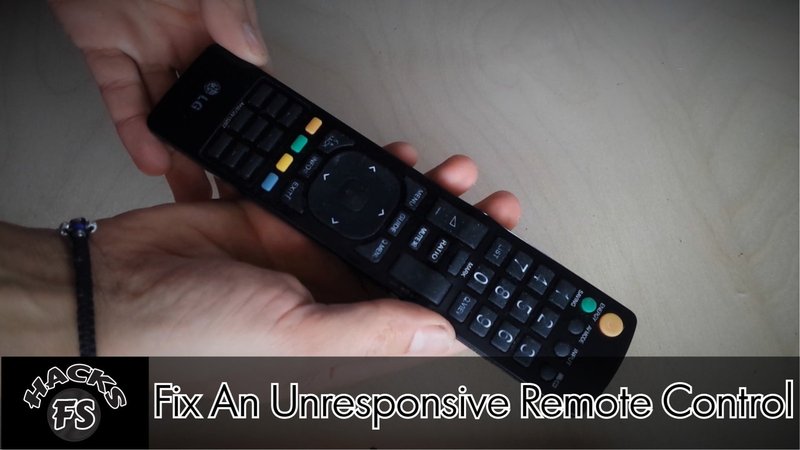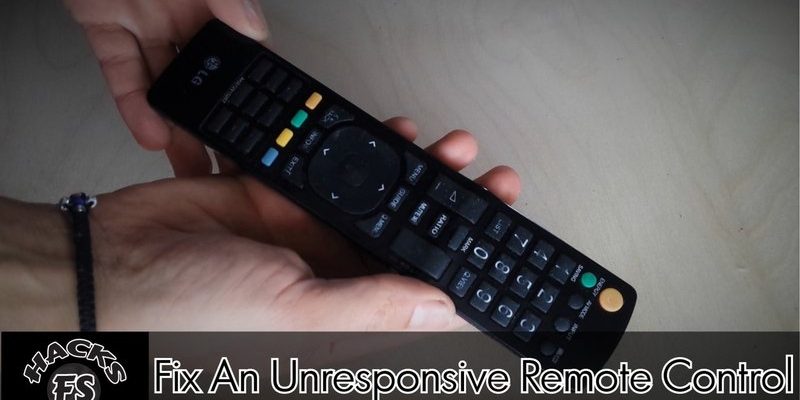
If you’re holding a Ring smart remote and wondering why the lights aren’t blinking or your devices aren’t reacting, you’re not alone. These remotes are handy for controlling everything from video doorbells to alarm systems, but sometimes, they hit a snag. The good news? You don’t have to be a tech whiz to get things running again. Let’s break down what’s happening behind the scenes and go step-by-step through what you can do.
Recognizing the Signs of an Unresponsive Ring Smart Remote
Sometimes, it’s easy to think a remote is just “slow” or maybe your press didn’t register. But certain clues tell you your Ring smart remote is genuinely unresponsive. Maybe the indicator light isn’t turning on at all, or it blinks in a weird pattern you haven’t seen before. You might hear a tiny click inside, but nothing changes on the device you’re trying to control.
Here’s the thing—sometimes it’s the remote, sometimes the device, and sometimes even Wi-Fi or Bluetooth acting up. How do you know? If none of your devices respond—no sound, no light, no action—your remote is likely the culprit. If it only fails with one device, you might need to focus elsewhere. Personally, I’ve spent several minutes poking at every button, wondering if I missed a magic combo.
Unresponsiveness often shows up as repeated “missed” commands. If you have to mash buttons three times just to change a setting, that’s a red flag. Don’t ignore small glitches—they’re usually the first sign your remote wants some attention.
Checking the Basics: Batteries and Physical Condition
You might be surprised how often the simplest fix is the right one. Dead batteries are the number one cause of an unresponsive Ring smart remote. Even if you *think* you put in fresh batteries last month, it’s worth double-checking. Devices like these sometimes drain faster if you use them often or if they’ve been sitting around in extreme temperatures.
First, check the battery indicator light. Some Ring remotes flash or change color when nearly out of juice. But honestly, not every model does, so don’t just rely on lights. Pop out the batteries and inspect for corrosion or leaking. If you spot any white or greenish gunk, that’s likely your problem—clean it carefully and use new batteries.
While you’re at it, look over the buttons and casing. Stickiness or debris can jam a button enough to confuse the remote’s circuit board. I’ve seen remotes get “gunked up” from soda spills or dusty storage spots. Gently wipe down the surface and make sure nothing’s stuck under the buttons. A quick cleaning can honestly save you an hour of troubleshooting.
Troubleshooting Ring Smart Remote Connectivity Issues
Let me explain how connections work with Ring smart remotes. Most models use either a proprietary wireless protocol or Bluetooth to talk to their devices. If something interrupts that connection—say, too many walls, a new Wi-Fi router, or even a recent power outage—the remote may lose sync.
Start by moving closer to the device you’re trying to control. Walls and furniture can absolutely block signals, especially if your remote uses Bluetooth. If you recently changed your Wi-Fi password or moved your Ring devices, the remote might need to be re-paired. Sometimes these remotes “forget” their partners after a glitch or battery change.
- Restart your Ring device (like the doorbell or alarm panel). Give the system a minute to reboot before testing the remote again.
- Cycle the remote’s power. Remove the batteries, wait at least 30 seconds, then put them back in. This can refresh its connection state.
- Check your app. Open the Ring app and make sure your devices are online. If they’re grayed out, the remote can’t communicate with them until you restore the network connection.
If you notice the remote only fails in a certain part of your house, a weak signal is probably to blame. Try using it closer to your Ring base station or access point.
How to Sync or Pair a Ring Smart Remote Again
You might be wondering, “Do I really need to pair my remote again?” Sometimes, yes—especially after changing batteries or resetting your home network. Syncing (or pairing) just means making sure the remote and your Ring device speak the same digital code.
Usually, the steps are pretty straightforward:
- Press and hold the pairing button on the remote for about five seconds. This is often hidden under the battery cover.
- Within the Ring app, select your device, tap “Add Accessory” or “Pair Remote,” and follow on-screen instructions.
- A flashing light typically means the pairing is working. A solid light or a chime confirms sync is complete.
Don’t worry if it takes a couple of tries. Wireless signals can be fussy, especially in crowded apartments or with lots of electronics around. If pairing fails, try restarting your phone, moving closer to your Ring device, and repeating the process.
Here’s a tip: Some Ring remotes work with both Ring-brand and certain universal receivers, but syncing may differ slightly. Always double-check which model you have—using the wrong instructions can drive you up the wall.
Resetting Your Ring Smart Remote to Factory Settings
If your remote still isn’t responding after new batteries and re-pairing, a factory reset might do the trick. Think of it as a hard reboot—like turning something off and back on at the deepest level. This clears any weird code glitches and returns the remote to its original state.
How to reset most Ring smart remotes:
- Locate the reset or “setup” button (usually inside the battery compartment).
- Press and hold it for 10-20 seconds. The indicator light should blink quickly, then pause or turn off.
- Release the button and wait. The remote will usually need to be paired again, as if it were brand new.
A reset wipes all stored codes and settings, so anything custom—like paired zones or unique device groups—will need to be set up again. Only do this as a last resort, since it’s a little like wiping your phone: necessary sometimes, but not something you want to do often.
If your remote still won’t respond post-reset, it could mean a deeper hardware problem, like a damaged chip or faulty battery contacts. At that point, it might be time to consider a replacement.
When to Update Ring Remote Firmware or Software
Firmware is the “mini operating system” inside your Ring smart remote. Updates can fix bugs, improve battery life, or boost compatibility with new devices. Normally, your remote updates itself automatically, as long as it’s paired and connected. But sometimes glitches prevent updates from installing properly.
Check the Ring app for firmware status:
- Open your device menu and look for an “Update” button or a note saying your firmware is out of date.
- If prompted, let the update run without touching buttons or moving the remote. Interrupting updates can cause bigger headaches.
If updates don’t download, double-check your Wi-Fi signal and make sure your Ring account is set up correctly. Occasionally, older models lose support for new firmware. In that case, staying aware of compatibility helps avoid future hiccups.
Here’s an insight:
Keeping your remote’s software current is like staying on top of oil changes in your car. It’s easy to forget, but regular updates prevent bigger issues down the line.
Comparing Ring Smart Remote to Universal Remotes: Alternatives and Limitations
You might be curious if a universal remote could do the same job. Universal remotes are designed to work across brands and devices, often through programmable codes. While convenient, they aren’t always able to sync the unique features of Ring’s proprietary system, like smart alerts or custom zone controls.
Ring smart remotes are purpose-built for Ring’s ecosystem. That means smoother pairing, better support, and access to updates. Universal remotes might offer more flexibility if you’ve got lots of different tech, but they rarely handle advanced Ring features.
Here’s the trade-off: If you love the “one remote to rule them all” idea, universals are worth exploring, but for Ring fans who rely on smart home automations or security settings, sticking with Ring-branded remotes is usually safer. I’ve tried both and—no surprise—the Ring remote just “feels” more responsive with its own devices.
Contacting Ring Support and Considering Remote Replacement
If you’ve tried all the troubleshooting steps—new batteries, sync, resets, updates—and your Ring smart remote still won’t cooperate, it’s probably time to reach out to Ring support. Even tech pros get stumped now and then; there’s no shame in calling for backup.
Gather your remote’s model number, purchase date, and a quick list of steps you’ve already tried. This helps support staff skip the basics and get right to the good stuff. Sometimes, the problem is widespread, and they’ll know about ongoing issues or offer a replacement if your device is under warranty.
Replacement isn’t the worst outcome. Hardware wears out or breaks down, and sometimes a fresh remote is the quickest route back to seamless smart home control. Just remember to properly de-register your old device in the Ring app so it doesn’t cause confusion later.
Wrapping Up: Getting Your Ring Smart Remote Responsive Again
Unresponsive smart remotes are annoying, but you don’t have to let them ruin your day. Nine times out of ten, it’s something simple—low batteries, signal issues, a missed update. Taking a methodical approach (and a deep breath) can often solve the problem in minutes. From checking batteries and cleaning buttons, to re-pairing and resetting, you’ve got options. And hey, if all else fails, Ring’s support team is there to help.
Smart tech is supposed to make life easier—not introduce new headaches. The real secret? Patience, a little troubleshooting, and knowing you’re definitely not the first (or last) person to have their Ring smart remote go silent. You’ve got this.
